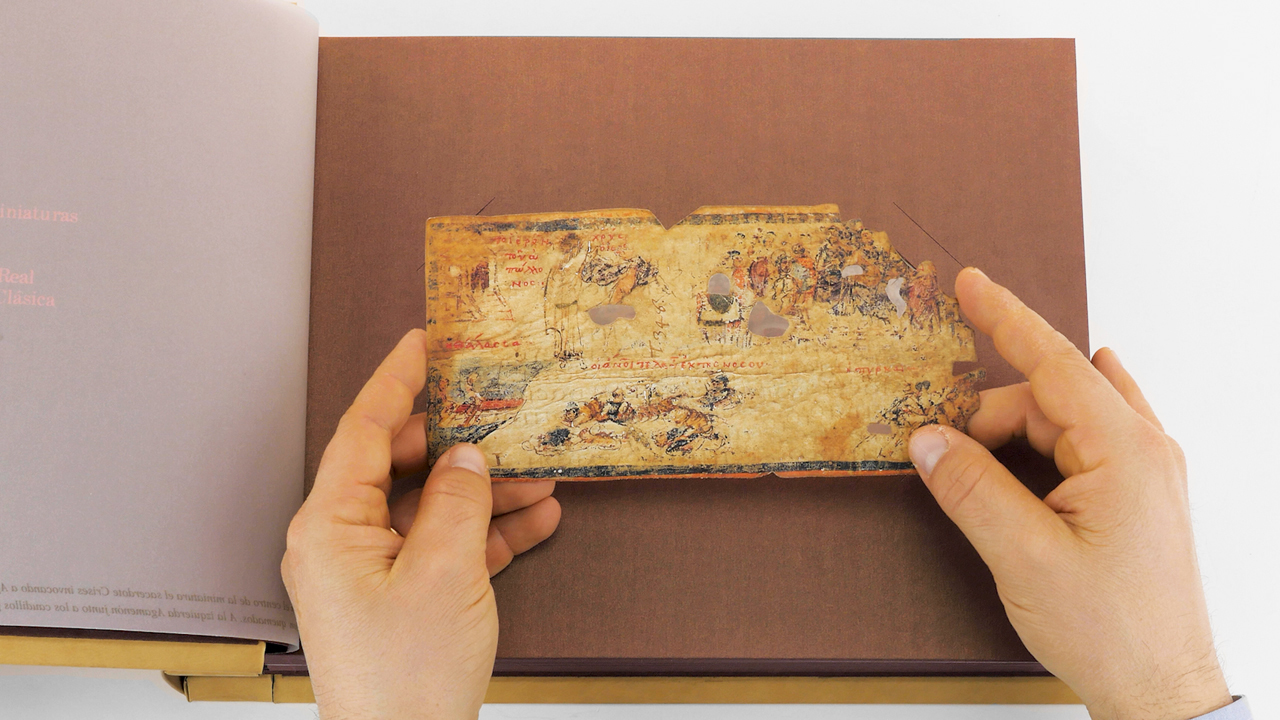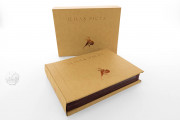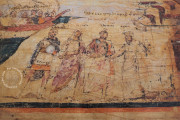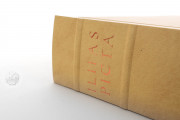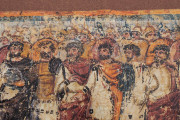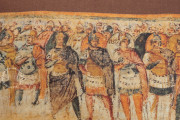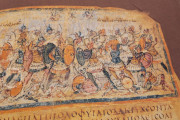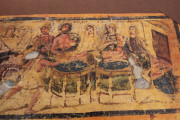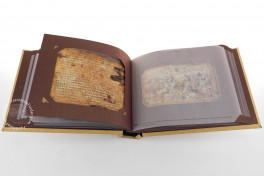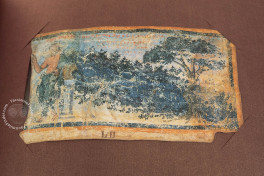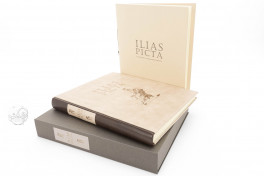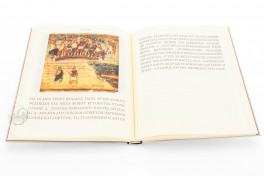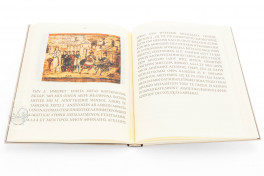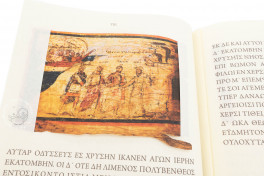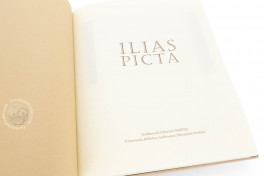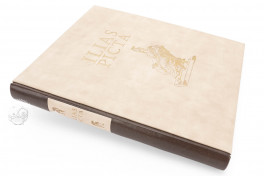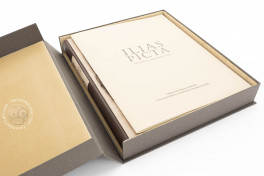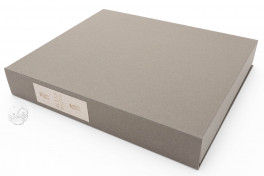Among the earliest examples of literary manuscript illumination, the fifty-two surviving fragments that make up the Ambrosian Iliad preserve what was likely the standard Classical iconography for Homeric legends. The fourth-century book had at one time nearly four hundred folios with perhaps as many as 240 illustrations before it was dismembered at some point between the twelfth and fifteenth centuries. The pictures have been cut out of a full manuscript of the Iliad, meaning much of its Greek text was lost. Its exact origin is unknown, but the quality and scale of the manuscript make an urban scriptorium likely, perhaps Constantinople or Alexandria.
Named for Milan’s Biblioteca Ambrosiana, which in turn takes its name from Ambrose, the patron saint of Milan, the fragmentary manuscript was once a part of Gian Vincenzo Pinelli’s extensive library. Its illuminations are the only known surviving Classical images of the Iliad and thus are important for providing a glimpse into the techniques, compositions, and materials of early manuscript production as well as giving a sense of the types of literary images that were once common in the ancient world.
Classical Compositions from Homeric Legend
All of the surviving miniatures illustrate narrative events from Homer’s Iliad. As was common in the late-Antique period, the pictures are labeled with the names of depicted characters and places, although some were replaced through the Middle Ages due to the originals having flaked away. The pictures are generally in poor condition, however the general compositions survive and provide an important insight into early manuscript illumination. Each scene is framed in red and blue and would have once been placed within a single columned text block.
Common in fourth-century illumination, backgrounds are gradients of pink, blue, and green and the figures are drawn as ink outlines and the clothes colored on top, here with orange/red, green, blue, and purple. Many of the scenes depict somewhat generic battles, however others offer evidence for cultural practice such as Achilles offering a sacrifice to Zeus. Here the details of Antiquity are on display: the tent with its decorative fringe, the Roman-type altar with a burning flame and Achilles wearing a purple toga that is drawn over his head.
Text Preserved on the Reverse of the Illuminations
The surviving text preserves clues about the history of the manuscript. Marginal notes suggest the book was at least mostly intact through the tenth century at some point after which the parchment pages were separated and trimmed down to the frames of the pictures. The Greek written in uncial on the reverse of each picture was pasted over with paper. This paper was later removed and the images are now known to be from an illustrated edition of Homer.
In the Collection of Gian Vincenzo Pinelli
The Humanist and book collector, Gian Vincenzo Pinelli, had amassed an enormous collection of around nine thousand printed books and manuscripts including the by-then fragments of an illustrated edition of Homer. After his death in 1601, his collection formed the basis for the Biblioteca Ambrosiana in Milan. The mounted pictures of the Ambrosian Iliad were cataloged in 1608 and rebound in 1612. It was not until 1819 that the images were discovered to be the illustrated Homer from the Pinelli collection.
We have 2 facsimiles of the manuscript "Ambrosian Iliad":
- Ilias Picta facsimile edition published by Ediciones Grial, 2009
- Ilias Picta facsimile edition published by Goldenmark Librarium, 2022

